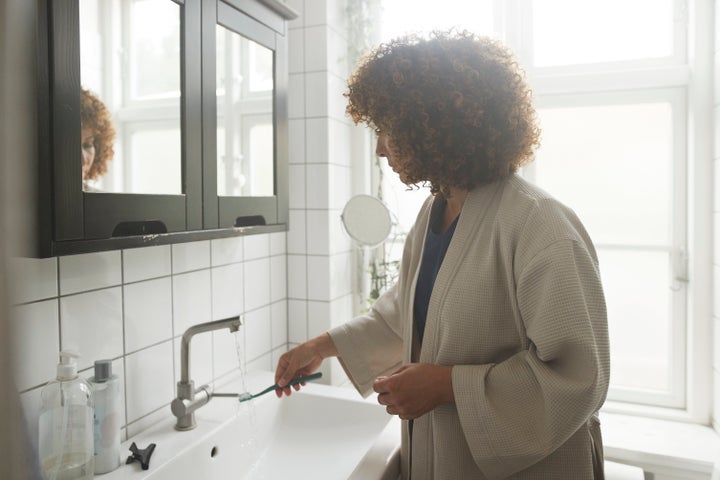After you’ve been sick, it’s always a safe bet to clean your home. You can strip your bedsheets, wash your clothes and wipe down surfaces. Doing this may not only provide you with peace of mind, but also get rid of lingering germs.
Does that mean replacing your toothbrush, too? After all, it’s possibly the item that had the most direct contact with your illness.
The short answer is yes. The general recommendation is to replace your toothbrush after you’re sick.
According to Dr Gary Liu, a pediatric dentist at Kind Smiles in California, this is particularly important if you’re dealing with infections like oral herpes, flu, strep throat and even common colds.
Germs can live on a toothbrush for between 24 hours and a few weeks, depending on the specific type of illness or bacteria. (For example, the flu virus can last on a toothbrush for up to three days, according to The Dental College of Georgia at Augusta University.) There’s also a small risk of getting reinfected, so it’s better to be safe than sorry.
Here are some more expert tips for good toothbrush hygiene during and after an illness:
Feel free to use the same toothbrush while you’re sick
Common sense might lead you to think that using the same toothbrush when you’re sick will prolong an illness, but that’s actually not true.
“You can use the same toothbrush while you’re sick as long as you change it once you are healthy,” said Dr. Lauren Becker, a general and cosmetic dentist. “However, be careful with the toothpaste tube, especially if you share a toothpaste tube with other members of the household. You may want to use your own toothpaste to avoid germs being passed from the toothbrush to the toothpaste tube.”
Don’t keep the toothbrush head covered
It may sound counterintuitive, but one tip is to leave your brush out in the open air. “The majority of bacteria that live on your toothbrush die in the presence of oxygen,” said Dr. Harvey Karp, a pediatrician and the founder of baby product company Happiest Baby. “Once your toothbrush is dry, most bacteria is eradicated.”
If you cover your toothbrush with a cap, then its bacterial count may be higher than if it were left out in the open. This means you should steer clear of travel cases and caps that commonly accompany toothbrushes.

Disinfect your toothbrush instead of throwing it out
If you don’t want to throw away your toothbrush, you can opt to disinfect it yourself. Dr. David Frank, a cosmetic dentist who founded Walden Dental in Texas, said “a toothbrush can be soaked in antibacterial mouthwash, a baking soda solution, a vinegar solution, as well as a denture cleanser.”
Don’t boil any toothbrush. If it’s an electric one, remove the head from the base before disinfecting.
For cleaning your toothbrush on a daily basis, Becker recommended “running it under hot water, rubbing your thumb along the bristles of the toothbrush and rinsing it in water again, then always letting it air-dry after without a cover.”
Change your toothbrush every 3 months (and more often if you’re sick)
According to Liu, the American Dental Association suggests replacing toothbrushes every three months due to worn-down bristles and the accumulation of microbes over time.
The same idea applies to electric toothbrushes; you’ll want to replace the head every three to four months. However, if you’re sick, you should change it out or clean it sooner.
“When replacing your toothbrush as needed, always make sure you’re using a soft-bristle toothbrush for the best cleaning,” Becker said.
If you feel like replacing your toothbrush after an illness isn’t enough for you, consider speaking with a doctor or dentist about next steps. They may be able to prescribe oral antiseptics and other products to keep you safe and healthy.
